Venus time came around in mid February. From that time till about early April I had a chance to test out a combination of filters and cameras. I’ve previously had good success at photographing other planets with the 8SE and this was my first real attempt at Venus and first with the EdgeHD 11. Here I’ll showcase some of the results, be sure to check out the video at the end which goes over things in more depth. I only had till about the first week of April, before Venus would creep too close to the only tree that obstructs my view in the West.

Software and Equipment
To test I used both Firecapture and also SharpCap. I tend to use Firecapture more, however when I tested things at F10 with the Asi294mc pro, I chose Firecapture.
- EdgeHD C11 OTA
- iOptron Cem120 Mount
- Rigel nStep focuser (buttons and wifi and Celestron CPC 1100 Stepper Motor)
- Celestron X-Cel 2X Barlow
- ZWO ADC
- ZWO Asi224MC
- Celestron OAG
- ZWO Asi294MC Pro
- ZWO Mini Electronic Filter Wheel
- Astronomik 742 IR Pass 1.25″ Filter
- Astronomik 807 IR Pass 1.25″ Filter
- Optolong 685 IR Pass 1.25″ Filter
- Baader U-Filter FUV1 1.25″ Filter
F20 and Filter Tests
In the video you can see some of my results first hand in the software. Here ill just share some of the results and some conclusions.
Of the four filters tested, I’d say the U-Filter and the 807 gave some of the best results, with a few caveats. The biggest issue is that when using the U-filter on either the 224 or the 294 cameras, there is a huge fps decrease from the others. Frame rate drops to around 10 fps on average, which means it takes a very long time to get meaningful results, though I did manage some decent results with both the 224 and the 294 with this filter, more so on the 294. Using the U-filter tended to show a bit more cloud features than the other IR Pass filters.
I think its fair to say that a camera like the asi290mm mini might fair better, especially with the U-filter. Also the bands that are sensitive to IR Pass are somewhat limited on the Asi224mc camera (I didnt test those with the 294), due to various factors.
Here is how I had things arranged at F20 with the 2X barlow on the C11. Note the barlow comes first off the OTA.

And then with F10 here is the arrangement. Going from the OTA to the camera its, Blue Fireball 1″ SCT threaded spacer, Celestron OAG (with Asi174mm mini guide camera), spacer, then EFW, then the Asi294MC Pro camera (total of around 146mm)

Since I was already doing OAG/DSO imaging at F10, I figured I’d add the U-filter to the wheel and give it a shot, with the idea of drizzling in mind, since this camera is higher resolution. Drizzling proved useful, particularly at 1.5x.
Results
Here is a result of using the asi224mc with the 807IR, 2x barlow and ADC. Roughly 37,688 frames were captured over about 300sec and this is the best percentage of them (I forget exactly, something around 30%). I used Autostakkert V3 x64 to stack (no sharpening, 75% Normalizing the stack, RGB align) and no drizzling. Then I adjusted wavelets in Registax v6. There might possibly be some cloud details showing up, depending on how good my Registax processing was done. My gain was roughly 335 for this one and exposure around 2.1ms on average.

I also found that doing a resize on an already “2x barlowed” image tends to make it a bit blurrier, so I went with the originals here, at least for the 2x ones.
On March 7th I had my first attempts with the Baader U filter. I did this with the 224MC camera but without the barlow to try to increase the frame rate, which was still low, around 7 fps, gain was around 185, while exposure around 130ms. Frames here are about 4590 over 600 sec. I probably could have achieved the better results that I got with the asi294mc and this filter, had I gone for much longer (it was easier to do longer duration exposures on the higher resolution asi294mc pro however)
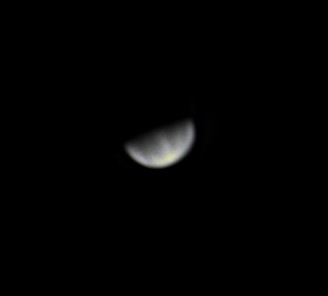
I did briefly try the 685 IR Pass filter in February, but the results werent much different, if not worse than the 807IR or the 742 IR pass. Here is one shot. Taken with 2x barlow, asi224mc and adc

Moving onto March 25th, I had a decent capture using the 742 IR pass + asi 224MC + 2x Barlow and ADC:
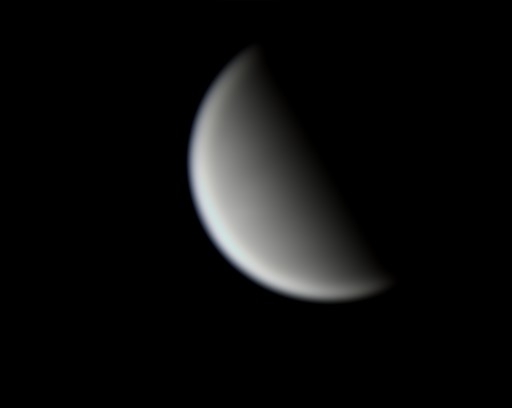
And finally as I got into April and was full swing with DSO’s and F10 I opted to put the U filter directly in my wheel and use my F10 DSO setup with the Asi 294MC Pro, giving me some of the best results (especially with drizzling at 1.5x). This shot below was 20,838 frames, an exposure of 0.0897S and Gain 336 with the Baader U-filter and Asi294mc pro and taking the best 20% of those frames. I actually used Raw16 mode with this one, rather than the more typical 8bit for planetary and it turned out better somehow. The actual capture area was only 216×200, then drizzled (to 324×300 at 1.5x). FPS were somewhere around 10, so this took around 34 minutes to complete.
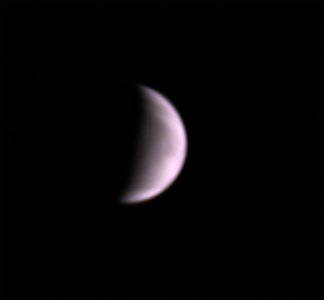
Here it is if you give it some false color (yellow) tint that is more commonly seen, doing this sort of revealed I may have had the exposure a tad high, resulting in a slight bright spot.
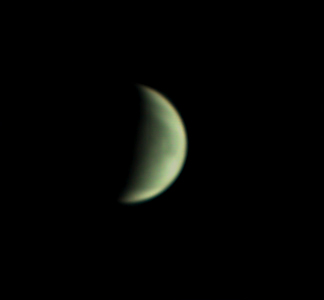
Here is is rescaled to 800×600
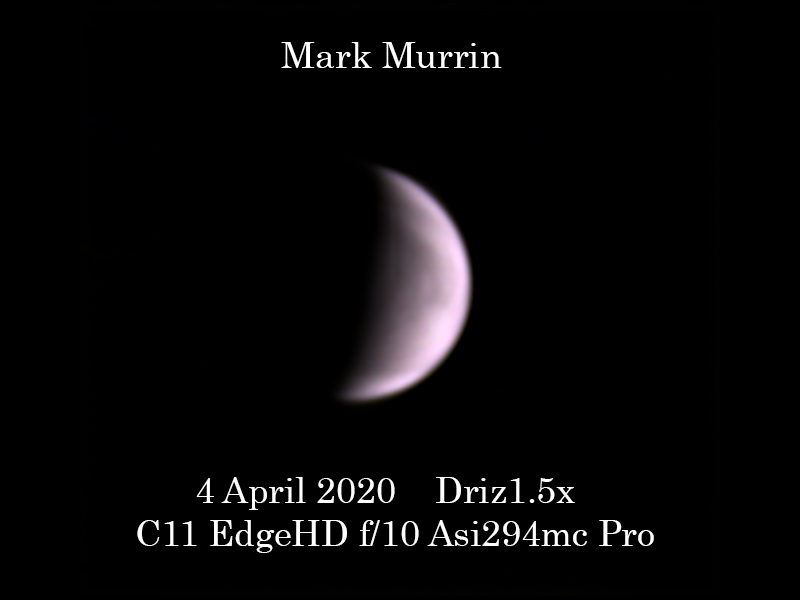
Conclusion
This was a fun exercise in testing out various combinations of equipment. It looks like despite the 224 and 294 cameras not really being the best fit for UV filters, you can get some interesting results if you have a steady shot and some patience with either camera. However, I think something like the asi290mm would be a better fit for such filters and Venus (I did briefly try the asi174mm mini and didnt get that good of results, probably due to pixel size or some other factor).

